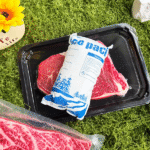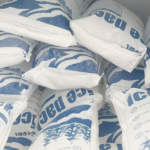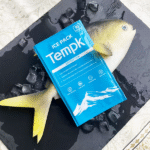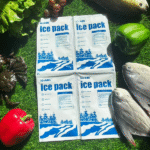Pharma Cold Chain: Safe Medicines in 2025?
Diperbarui: 24 November 2025
When you send a life saving vaccine to a remote clinic, you trust the rantai dingin farmasi to keep it potent. Di dalam 2025 this system is expanding rapidly: the market for temperature controlled pharmaceutical packaging is projected to grow from roughly USD 6.36 miliar masuk 2025 ke USD 11.50 miliar oleh 2034, and analysts expect the global pharmaceutical cold chain to reach USD 1.454 triliun sebesar 2029. That growth is driven by biologics, terapi gen, stricter regulations and smarter logistics. This guide shows you what the pharma cold chain is, the challenges it faces, and how you can build a resilient, compliant and sustainable supply line.

What is the pharmaceutical cold chain? Get a clear definition and learn why temperature control is critical for vaccines, biologics and other fragile medicines.
Which challenges threaten cold chain integrity? Understand infrastructure, cost and regulatory obstacles, and how they affect your shipments.
How are technology and innovation reshaping the industry? Temukan bagaimana sensor IoT, blockchain and AI are transforming monitoring, traceability and predictive planning.
What strategies build resilience and sustainability? Learn best practices for energy efficient cooling, modular storage and collaborative logistics to reduce risk.
Apa yang terbaru 2025 tren? Explore market forecasts, regional outlooks and emerging innovations shaping the future of pharmaceutical cold chain logistics.
What Is the Pharmaceutical Cold Chain and Why Is It Critical?
The pharmaceutical cold chain is a controlled temperature supply network that keeps medicines, vaccines and biologics within strict thermal ranges from manufacturer to patient. Tanpanya, delicate products degrade or lose potency. The cold chain spans insulated packaging, refrigerated transport and temperature controlled storage facilities. Di dalam 2024 the reusable packaging segment held 65 % dari pasar, dan secara kasar 20 % of new drugs under development are gene and cell therapies memerlukan kontrol suhu yang ketat. That means more shipments must remain within narrow temperature bands to protect patient safety.
How it works and why it matters. Imagine you are shipping biologics from a pharmaceutical plant in Belgium to a clinic in rural Africa. The vaccine needs to stay between 2 °C dan 8 °C throughout its journey. To achieve this, you package it in a vacuum insulated container with phase change materials, menambahkan IoT enabled sensors and data loggers to record temperature and humidity, and plan the route through refrigerated trucks and warehouses. If a sensor detects a temperature excursion, an alert triggers immediate action. Beyond preserving quality, cold chain compliance is a regulatory requirement: KITA. FDA’s Drug Supply Chain Security Act and the EU’s Good Distribution Practice guidelines mandate traceability and strict temperature control.
Components of a Temperature Controlled Logistics System
To appreciate how the cold chain works, it helps to break it into its key components. Each plays a role in maintaining temperature and regulatory compliance.
| Komponen | Role in the Cold Chain | Key Data | Manfaat bagi Anda |
| Kemasan terisolasi (reusable or single use) | Keeps products within target temperature ranges during transit; includes vacuum insulated panels, phase change materials and thermal blankets. | Reusable solutions represented 65 % of the packaging market in 2024. | Reduces waste and cost by providing longer temperature control and repeated use. |
| Transportasi berpendingin | Trucks, containers and aircraft with mechanical refrigeration to maintain set temperatures. | The cold chain logistics market was valued at USD 324.85 miliar masuk 2024 dan bisa mencapai USD 862.33 miliar oleh 2032. | Protects product integrity across long distances and helps meet global demand. |
| Perangkat pemantauan suhu | Sensor IoT, data loggers and smart tape monitor temperature, kelembaban dan lokasi secara real time. | The hardware segment held over 76 % membagikan of the cold chain tracking market in 2022. | Enables proactive intervention and compliance reporting by giving you live visibility. |
| Regulatory documentation and traceability | Serialization and blockchain tools record every hand off and temperature reading. | Authorities like FDA and WHO require traceability for vaccines and biologics. | Helps you prove compliance, reduce counterfeiting and recall defective batches quickly. |
Tips dan nasihat praktis
For vaccine shipping: Use containers validated for 48–120 hours of thermal protection and pair them with IoT sensors to receive real time alerts. Keep contingency packs and backup power sources on hand in case of delays.
For biologics and cell therapies: Choose ultra cold packaging capable of maintaining temperatures down to –80 °C and confirm carriers have dry ice handling expertise. Even minor excursions can spoil high value products.
For small clinics: Simplify your cold chain by partnering with logistics providers who offer turnkey solutions—packaging, temperature monitoring and compliance documentation—so you can focus on patient care.
Studi kasus: A global pharmaceutical company struggled with temperature excursions during international shipments of biologics and vaccines. After partnering with packaging providers to deploy AI powered temperature monitoring and predictive analytics, the company integrated vacuum insulated containers and IoT sensors. Predictive algorithms identified excursions before they occurred, enabling proactive interventions and reducing spoilage. Hasilnya: product loss decreased, regulatory compliance improved and customer satisfaction rose.
What Challenges Does the Pharmaceutical Cold Chain Face?
The cold chain must overcome infrastructure gaps, high costs and regulatory complexity. Modern distribution networks span continents and climates, yet many facilities still rely on aged infrastructure built decades ago. Nearly 80 % gudang tidak otomatis, and legacy refrigeration systems struggle to meet today’s efficiency and sustainability standards. Pada saat yang sama, advanced packaging—like phase change materials and IoT enabled sensors—can be costly, making it harder for small manufacturers to comply. Peraturan yang ketat (FDA’s DSCSA, I PDB) demand serialization, temperature records and quality management, increasing administrative burdens. Akhirnya, geopolitical unrest and climate events disrupt supply lines; Maersk notes that black swan events and tariffs have affected transit times and capacity.
Digging deeper into the obstacles. High operational costs are a major barrier. As the Towards Healthcare report points out, cold chain logistics require sophisticated infrastructure and coordination among multiple stakeholders; this drives up expenses and can lead to higher drug prices. Smaller companies may struggle to invest in reusable packaging or smart sensors. Regulatory complexity adds another layer: government initiatives like India’s Pharma Vision 2020 and China’s Essential Medicines Policy encourage infrastructure upgrades and cold chain standardization, but compliance can be challenging without standardized systems. Sementara itu, climate resilience is becoming critical—floods, heatwaves and power outages can disrupt cold storage facilities. The Nextstop group notes that modular warehouses and distributed storage networks help maintain operations during extreme events.
Regulatory and Environmental Challenges in 2025
Regulations and environmental pressures are reshaping the cold chain landscape. Key rules include:
| Regulation or Guideline | Ringkasan | Impact on Your Operations |
| FDA Drug Supply Chain Security Act (DSCSA) | Requires serialization and traceability for prescription drugs throughout the supply chain. | You must maintain digital records of product movement and temperature data to comply. |
| EU Good Distribution Practice (PDB) | Mandates temperature control during the transport of pharmaceuticals across EU member states. | Carriers must demonstrate temperature controlled transport and provide auditable documentation. |
| WHO PQS Guidelines | Sets global standards for vaccine storage and transportation. | Facilities handling vaccines must meet performance, quality and safety criteria for refrigeration equipment. |
| Peraturan lingkungan | International agreements are phasing out high global warming refrigerants (HFC, HCFC) and encouraging energy efficient equipment. | You should upgrade to natural refrigerants and invest in energy efficient systems to meet standards. |
| BRC/SQF food safety standards | Retailers now require warehouses to meet stringent safety certifications like BRC and SQF. | Cold storage facilities must implement advanced temperature control and traceability systems to comply. |
Tips dan nasihat praktis
Understand your regulatory obligations: Map the jurisdictions where your products travel and prepare compliance documentation accordingly. Invest in digital traceability solutions that automate record keeping.
Invest in infrastructure upgrades: Modernize refrigeration systems, insulation and facility design to meet energy efficiency and sustainability requirements.
Plan for climate resilience: Develop contingency plans with modular warehouses or distributed storage networks to maintain operations during extreme weather. Install backup generators and dual power sources in critical sites.
Contoh dunia nyata: Di dalam 2024 Hurricane Helene disrupted IV fluid production at a major North Carolina plant. The storm exposed vulnerabilities in supply chains and highlighted the need for resilient infrastructure and coordinated emergency planning. Companies with distributed storage and robust contingency plans maintained supply continuity.
How Are Technology and Innovation Reshaping the Pharmaceutical Cold Chain?
Innovative technologies are transforming cold chain logistics with real time visibility, analitik prediktif dan otomatisasi. IoT sensors and smart tapes monitor temperature, kelembaban dan lokasi, sending live data to supply chain dashboards. Blockchain creates tamper proof records for each shipment, enhancing traceability and compliance. Artificial intelligence analyses historical and real time data to predict equipment failures and optimize routes. Robotics and automated storage systems reduce labor costs and minimize human error. Bersama, these technologies help prevent spoilage, reduce waste and enhance patient safety.
Exploring key innovations. Di Asia Tenggara, innovators are using blockchain to secure data and track every step of vaccine transport. Solar powered cold storage units provide reliable cooling in regions with unstable electricity grids. IoT enabled smart sensors trigger alerts when temperatures deviate, memungkinkan tindakan perbaikan yang cepat. AI powered route optimization uses real time traffic and weather data to deliver sensitive medicines more efficiently. And portable cryogenic freezers allow ultra cold storage at –80 °C to –150 °C, supporting cell and gene therapies. These innovations demonstrate how technology can bridge geographical barriers and ensure product integrity.
Emerging Technologies to Watch in 2025
| Teknologi | Keterangan | Real world Significance |
| IoT sensors and smart tape | Small devices attached to packages or pallets that transmit temperature, kelembaban dan data lokasi secara real time. | Reduce spoilage by enabling immediate corrective actions and provide digital evidence for audits and regulatory compliance. |
| Ketertelusuran Blockchain | Distributed ledger technology that records transactions and environmental data across the supply chain. | Prevents data manipulation, enhances trust and supports compliance with authorities like INVIMA and FDA. |
| Kecerdasan buatan dan analisis prediktif | Algorithms forecast demand, predict equipment maintenance and optimize delivery routes. | Decreases fuel consumption, minimizes delays and prevents temperature excursions through proactive decision making. |
| Penyimpanan dingin bertenaga surya | Cooling units powered by solar panels to provide reliable refrigeration off grid or during outages. | Cuts energy costs and carbon footprint while ensuring vaccine availability in remote or underserved areas. |
| Robotics and automation | Automated storage and retrieval systems and robotic handlers replace manual labor in warehouses. | Improve throughput, reduce errors and address labor shortages; only about 20 % of warehouses are currently automated, menunjukkan potensi pertumbuhan yang signifikan. |
| Freezer kriogenik portabel | Mobile units capable of maintaining ultra low temperatures between –80 °C and –150 °C. | Enable safe transport of cell and gene therapies and other biologics requiring ultra cold conditions. |
Tips dan nasihat praktis
Start with IoT basics: Use temperature monitoring devices on every shipment to establish baseline data and identify recurring weak points.
Evaluate blockchain solutions: For high value products, blockchain can provide tamper proof tracking. Work with partners to integrate systems and ensure data interoperability.
Gunakan pemeliharaan prediktif: AI tools can analyze equipment performance and schedule maintenance before a failure occurs, avoiding costly downtime.
Adopt solar solutions where power grids are unstable: Solar powered storage reduces reliance on diesel generators and lowers operating costs.
Contoh: A pharmaceutical distributor in Southeast Asia implemented blockchain based tracking and solar powered storage to distribute vaccines in rural areas. IoT sensors monitored temperature, while AI algorithms optimized delivery routes. The system reduced delivery times, prevented temperature excursions and improved trust among stakeholders.
What Strategies Can You Adopt to Build a Resilient and Sustainable Pharma Cold Chain?
Creating resilience means combining proactive planning with sustainability. Companies are moving from reactive cooling to integrated strategies that minimize risk and environmental impact. This involves building modular warehouses, adopting energy efficient refrigeration, collaborating with partners and reducing carbon emissions. According to Nextstop Group, distributed storage facilities and modular warehouses help maintain operations during floods or heatwaves. Investing in solar energy, electric refrigerated trucks and high efficiency cooling systems aligns with European environmental goals and reduces long term operating costs. Collaborative logistics, where suppliers pool refrigerated loads on shared platforms, lowers emissions and costs. Compliance and traceability systems using smart packaging and blockchain ensure that every hand off is documented.
Building your own resilient framework. Start by conducting a risk assessment of your supply chain: identify bottlenecks, climate risks and regulatory requirements. Then invest in smart infrastructure—energy efficient refrigeration and renewable energy sources reduce both carbon footprint and energy costs. Consider modular storage or micro fulfillment hubs to decentralize operations. Establish partnerships with logistics providers who share your sustainability goals and can integrate real time data systems. Akhirnya, design training programs for staff to handle new technologies and maintain compliance.
Best Practices for Sustainable and Resilient Cold Chain Logistics
| Strategi | Pelaksanaan | Keuntungan |
| Pendinginan hemat energi | Upgrade to systems using low global warming refrigerants and high efficiency compressors. Pair with solar panels or renewable energy sources where feasible. | Memotong biaya energi, reduces greenhouse gas emissions and meets regulatory requirements. |
| Modular and distributed storage | Build or partner with regional micro warehouses to reduce single point failures and improve responsiveness to local demand. | Maintains operations during disasters, shortens delivery times and lowers fuel consumption. |
| Collaborative logistics platforms | Use cross industry platforms to pool refrigerated loads and share transport capacity. | Reduces empty miles, lowers emissions and cuts costs through shared resources. |
| Smart packaging and traceability | Adopt packaging embedded with sensors and QR codes; integrate data into blockchain or cloud platforms. | Meningkatkan visibilitas, ensures compliance and strengthens consumer trust. |
| Training and continuous improvement | Provide staff with training on handling temperature sensitive products and using digital tools; establish continuous improvement programs. | Minimizes human error, increases adoption of technology and fosters a culture of quality and sustainability. |
Tips dan nasihat praktis
Plan for redundancy: Use dual refrigeration units and backup power at critical points in your supply chain. Run regular drills to test emergency procedures.
Choose reusable packaging where feasible: Reusable insulated containers make up the majority of the market and can reduce waste and cost over the product life cycle.
Engage in collaborative networks: Partner with suppliers, carriers and even competitors to pool resources. This can reduce empty miles and improve sustainability.
Monitor sustainability metrics: Track energy consumption, carbon emissions and spoilage rates. Use these metrics to set improvement targets and report progress to stakeholders.
Contoh industri: Selama pandemi COVID 19, B2B food distributors shifted to direct to consumer models, using advanced cold storage and logistics to deliver meal kits. Companies that invested in efficient temperature controlled delivery and automated facilities successfully moved from B2B to B2C operations and maintained high product quality.
What Are the Forecast and Market Trends for the Pharmaceutical Cold Chain in 2025?
Prospek pasar – The pharmaceutical cold chain is expected to continue its upward trajectory. Precedence Research predicts that the global market for temperature controlled pharmaceutical packaging will expand from USD 5.93 miliar masuk 2024 ke USD 6.36 miliar masuk 2025 dan mencapai USD 11.50 miliar oleh 2034, tumbuh di a 6.8 % CAGR. North America held the largest share (32 %) di dalam 2024, while the Asia Pacific region is expected to record the fastest growth (CAGR 8.08 %). On the broader logistics side, the cold chain market is projected to climb from USD 324.85 miliar masuk 2024 ke USD 862.33 miliar oleh 2032, memamerkan a 13 % growth rate.
Drivers and opportunities. Rising consumption of medicines and vaccines, stringent regulatory standards and the surge in biologics and personalized therapies are driving demand for cold chain services. Digital tracking, blockchain and AI are enhancing transparency and efficiency. The branded pharmaceuticals segment dominated the supply chain in 2024, while biologics and specialty drugs are expected to grow fastest. Growing e pharmacy services and direct to patient delivery models require efficient last mile distribution networks. Strategic collaborations between pharmaceutical manufacturers and logistics providers are expanding market reach. Sementara itu, the cold chain logistics segment is set to grow rapidly as regulators enforce stricter guidelines. Opportunities also lie in expanding cold chain infrastructure in emerging markets and adopting smart sensors to minimize product loss.
Regional Outlook and Investment Opportunities
| Wilayah | Growth Projection | Penggerak Utama | Opportunity |
| Amerika Utara | Leading market share (32 % di dalam 2024); KITA. market expected to grow from USD 1.63 miliar masuk 2025 ke USD 2.68 miliar oleh 2034. | Strong regulatory framework (DSCSA), high adoption of biologics and advanced packaging technologies. | Invest in AI enabled monitoring and ultra cold storage to support gene and cell therapies. |
| Eropa | Cold chain logistics segment dominated the drug supply chain market in 2024. | Strict GDP guidelines and demand for biologics; sustainability regulations phasing out HFCs. | Upgrade aging infrastructure and adopt energy efficient refrigeration to meet environmental goals. |
| Asia Pasifik | Fastest growth (CAGR 8.08 %) di antara 2025 Dan 2034; cold chain logistics segment expected to grow quickly. | Rising pharmaceutical manufacturing, increasing consumption of vaccines and biologics, government initiatives like Pharma Vision 2020. | Expand cold chain infrastructure, adopt solar powered storage and develop local supply chains to reduce reliance on imports. |
| Amerika Latin & Timur Tengah | Emerging opportunities as healthcare markets expand. | Investments in climate resilient logistics (modular warehouses) and collaborative platforms. | Localize cold storage and partner with global logistics providers for technology transfer and training. |
Tips dan nasihat praktis
Pantau tren pasar: Keep track of regional regulations, economic indicators and disease outbreaks to adjust your supply chain strategy.
Tailor strategies to regional needs: Misalnya, invest in renewable energy in regions with unreliable grids and prioritize automation in regions with high labor costs.
Jelajahi kemitraan: Collaborate with local logistics providers to gain insights into regional challenges and leverage their networks.
Wawasan: Analysts note that the global demand for temperature sensitive products, termasuk obat-obatan dan biologi, sedang meningkat. Coupled with sustainability pressures and stricter regulation, this demand will continue to drive investment in cold chain infrastructure and technology.
2025 new Farmasi Dingin Chain Perkembangan Dan Tren
Di dalam 2025 the pharmaceutical cold chain is evolving rapidly. Perkembangan utama meliputi:
Adopsi otomatisasi dan robotika: Hanya tentang 20 % gudang diotomatisasi, yet automation is essential to address labor shortages and improve efficiency. Expect more automated storage and retrieval systems, robotic handlers and AS/RS solutions in 2025.
Keberlanjutan sebagai nilai inti: Environmental concerns and stricter regulations are pushing companies to adopt energy efficient refrigeration systems, energi terbarukan dan pengemasan berkelanjutan. The phase out of HFCs and HCFCs is accelerating facility upgrades.
Real time visibility and standardization: Advanced IoT devices provide continuous monitoring and help standardize data across supply chains. Oleh 2025, 74 % of logistics data diharapkan terstandarisasi, enabling seamless integration.
AI dan analisis prediktif: Algorithms optimize routes, forecast demand and predict maintenance needs, reducing costs and preventing disruptions. AI adoption is accelerating as companies seek to manage complex networks and meet stricter service levels.
Growth in biologics and personalized medicine: With gene and cell therapies representing around 20 % obat baru, demand for ultra cold storage and specialized packaging is increasing. Portable cryogenic freezers and advanced insulated containers support this growth.
Wawasan pasar. The global demand for cold chain logistics continues to expand. Fortune Business Insights estimates that the cold chain logistics market could grow at 13 % CAGR. The rise of plant based foods and organic products also increases demand for refrigerated transport. Industry experts emphasize that resilience and sustainability will be key differentiators in 2025, with companies investing in modern infrastructure, renewable energy and collaborative platforms..
FAQ
Pertanyaan 1: What temperatures are required in the pharmaceutical cold chain?
Pharma products generally fall into three categories: controlled ambient (15 °C–25 °C), didinginkan (2 °C–8 °C) and frozen/ultra cold (–20 °C hingga –80 °C). Some gene and cell therapies need temperatures as low as –150 °C. Always refer to the product’s stability data and regulatory guidelines.
Pertanyaan 2: How can I prevent temperature excursions during transport?
Use validated insulated packaging, precondition phase change materials correctly, and equip shipments with Sensor IoT that provide real time alerts. Rencanakan rute dengan hati-hati, allow for contingencies and train staff to respond quickly if an alert is triggered.
Pertanyaan 3: Is reusable packaging cost effective?
Ya. Reusable containers represented 65 % of the pharmaceutical packaging market in 2024. Though the upfront cost is higher, reusable packaging reduces waste and lowers cost per use over time. It also supports sustainability goals.
Pertanyaan 4: Bagaimana blockchain meningkatkan transparansi rantai dingin?
Blockchain provides a tamper proof, distributed ledger that records every hand off, temperature reading and location change. This data is visible to all authorized parties, enhancing trust, preventing fraud and simplifying compliance audits.
Pertanyaan 5: Peran apa yang dimainkan AI dalam logistik rantai dingin??
AI algorithms analyze historical and real time data to perkiraan permintaan, optimize routes and predict equipment maintenance. Ini mengurangi konsumsi bahan bakar, minimizes delays and prevents temperature excursions, ultimately lowering costs.
Pertanyaan 6: How can small clinics ensure compliance with strict regulations?
Partner with logistics providers who offer turnkey cold chain solutions, termasuk kemasan terisolasi, temperature monitoring and regulatory documentation. Use standardized IoT devices and maintain training for staff. Compliance tools help you meet DSCSA, GDP and WHO guidelines.
Saran
The pharmaceutical cold chain is more important than ever. Demand for temperature sensitive medicines and biologics is rising, and the market for temperature controlled packaging is projected to grow from USD 6.36 miliar masuk 2025 ke USD 11.50 miliar oleh 2034. Sustainability and regulation are driving investments in energy efficient refrigeration, renewable energy and traceability. Emerging technologies—IoT sensors, blockchain, AI and robotics—offer real time visibility and predictive capabilities. Untuk sukses, you need to upgrade infrastructure, adopt smart technologies and build resilience.
Tindakan
Assess your cold chain: Map out your supply network, identify weak points and prioritize investments in insulated packaging, refrigeration and temperature monitoring.
Invest in smart technology: Equip shipments with IoT sensors, explore blockchain for traceability and use AI to optimize routes and maintenance.
Modernisasi infrastruktur: Replace aged refrigeration systems with energy efficient equipment and consider modular or distributed storage to improve resilience.
Collaborate and train: Work with logistics partners to share resources and adopt best practices. Provide ongoing training to staff on handling temperature sensitive products and using digital tools.
Track sustainability metrics: Monitor energy use, carbon footprint and spoilage rates. Set improvement goals and communicate progress to stakeholders.
Tentang Tempk
Profil Perusahaan. Tempk is the brand of Shanghai Huizhou Industrial Co., Ltd., didirikan di 2011. The company provides comprehensive temperature control products for families and businesses and has become a high tech leader in temperature control packaging solutions. Its extensive product range covers outdoor insulated equipment, insulin carriers, personal thermotherapy devices, rumah & kitchen appliances and temperature controlled packaging. Tempk mengoperasikan a 1,400 m² R&D center in Shanghai that complies with CNAS and ISTA standards. Dengan lebih dari 30 technical patents and ISO certified factories across China, the company focuses on innovation, quality and customer first values. Its mission is to be a global leader in temperature keep products, delivering safe, solusi yang efisien dan berkelanjutan.
Tindakan Ready to build a resilient pharmaceutical cold chain? Contact Tempk’s experts to discuss custom packaging solutions and turnkey logistics. Whether you need reusable insulated containers, IoT enabled temperature monitoring or solar powered storage, their team can help you design a sustainable and compliant supply chain.























